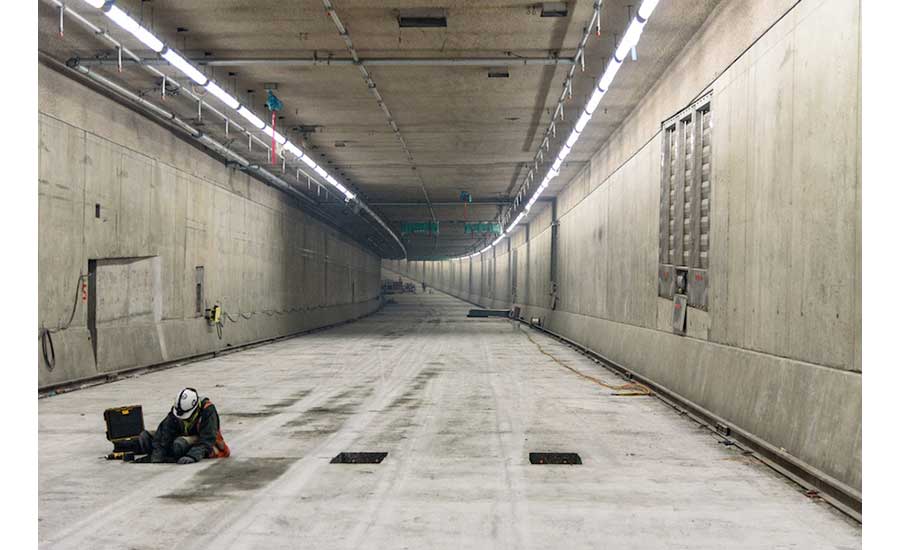Using the word early to describe the opening of the Alaskan Way Viaduct Replacement Tunnel isn’t fully accurate. The project was originally slated to open in December 2015, but faced years of delays when the tunnel-boring machine malfunctioned beneath downtown Seattle pushing the revised timetable to the first half of 2019. Even still, a 2018 opening of the tunnel to traffic—just shy of three years late—offers a bit of an earlier than anticipated opening, showing the progress the tunnel has made in the last two years.
Project owner Washington State Dept. of Transportation reports that contractors Seattle Tunnel Partners made “great progress” in 2017, finishing tunneling, disassembly of what was at the time the world’s largest tunnel-boring machine and completion of the southbound roadway inside the tunnel, the upper level of the double-decker 1.7-mile tunnel. Based on the most recent contractor schedule, the tunnel could open to drivers in fall 2018.
“Our goal is to safely open the tunnel to traffic as quickly as possible and begin removing the Alaskan Way Viaduct, but it’s too early to accurately predict a tunnel opening date,” WSDOT says in a release.
Before opening, crews must finish the lower deck—the northbound roadway—and connect all the necessary systems to operate the tunnel. Once ready, the tunnel will work through a series of tests—including checking approximately 5,000 individual components and nearly 90 tunnel systems—and certification by the Seattle Fire Department.
Construction of final ramp and highway connections to the tunnel will start soon as a separate construction effort. The SR 99 Connections Project will build the final connections between the existing highway and tunnel under a $22.6 million contract awarded by WSDOT to Scarsella Bros. in December 2017.
Immediately ahead of the tunnel opening, SR 99 through downtown Seattle will close to traffic for approximately three weeks as ramps to and from SR 99 get finalized. The final connections to the tunnel can only get built after the viaduct closes because crews must demolish portions of the current roadway to realign the highway.
Once the tunnel opens, demolition projects can start. The demolition contractor will not only tear down the Alaskan Way Viaduct, but decommission the Battery Street Tunnel and reconnect surface streets across Aurora Avenue North. Those three projects were combined under a single design-build contract to shave off approximately one year of cumulative construction time.
It will remain up to the contractor to determine exactly how to demolish the viaduct. WSDOT plans to select the contractor in late spring 2018 and have them start work in early 2019, expecting about a nine-month work window.
Follow Tim Newcomb on Twitter at @tdnewcomb.


Post a comment to this article
Report Abusive Comment